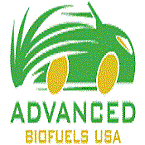Session/Tracks
Track 01: Food Technology
Food technology is one of the subsidiaries of food science which deals with the production procedures that make foods. It is a science which covenants with the methods and principals involved in processing and preserving the food substances. The study of food technology is to advance new methods and systems for keeping food products safe and unaffected from natural harms such as bacteria and other micro-organisms. Food technology is a multidisciplinary field that applies the principles of science, engineering, and technology to the production, processing, preservation, packaging, and distribution of food. This discipline aims to ensure the safety, quality, and nutritional value of food products while enhancing their convenience and availability to consumers, Advances in food technology have led to the development of innovative processing methods that extend the shelf life of food, improve its safety, and enhance its sensory attributes. Techniques such as pasteurization, canning, freezing, and high-pressure processing are widely used to inactivate pathogens and spoilage microorganisms, ensuring that food remains safe and palatable for extended periods. Additionally, novel processing methods like microwave-assisted thermal sterilization and pulsed electric fields are being explored for their ability to preserve the nutritional and sensory qualities of food with minimal thermal damage. Ensuring the safety and quality of food is a primary concern in food technology. Advanced analytical techniques, such as chromatography, spectroscopy, and molecular biology methods, are employed to detect contaminants, pathogens, and adulterants in food products. Food safety management systems, including Hazard Analysis and Critical Control Points (HACCP) and ISO standards, provide frameworks for identifying and controlling potential hazards throughout the food supply chain. Continuous monitoring and quality control measures help maintain high standards of food safety and prevent foodborne illnesses.
Recommended:
European Federation of Food Science and Technology (EFFoST), BLL – German Federation for Food Law and Food Science, Food Drink Europe, European Chemical Industry Council (CEFIC), Association of European Manufacturers and Formulators of Enzyme Products (AMFEP), European Flavour Association (EFFA), International Sweeteners Association (ISA), Natural Food Colors Association (NATCOL)
Track 02: Agri Food Technology
The agri-food sector is the process of food production and distribution, and contains a enormous range of roles from farming to the point of eating. Agricultural technology, or agri-tech, is specifically about emerging new technologies to expand food production. The main objective of agri-tech is reducing the impact of farming on the environment, but it can also increase productivity, profit, or health and safety. Agri-food technology encompasses the application of technological innovations to the agricultural and food production sectors, aiming to enhance productivity, efficiency, and sustainability. This field integrates various scientific and engineering disciplines to address the challenges of feeding a growing global population, improving food security, and minimizing the environmental impact of agriculture. recision agriculture is a key aspect of agri-food technology, involving the use of data analytics, satellite imagery, and GPS technology to monitor and manage crop production. By applying precise amounts of water, fertilizers, and pesticides, farmers can optimize yield, reduce waste, and lower costs. This approach also minimizes environmental impact by preventing overuse of resources. Innovations in food processing and preservation technologies are essential for extending the shelf life of products, ensuring food safety, and reducing waste. Techniques such as high-pressure processing (HPP), cold plasma treatment, and advanced packaging materials help maintain the nutritional quality and freshness of food while minimizing spoilage.
Recommended:
European Federation of Food Science and Technology (EFFoST), BLL – German Federation for Food Law and Food Science, Food Drink Europe, European Chemical Industry Council (CEFIC), Association of European Manufacturers and Formulators of Enzyme Products (AMFEP), European Flavour Association (EFFA), International Sweeteners Association (ISA), Natural Food Colors Association (NATCOL)
Track 03: Food Engineering and Processing
Food engineering is an interdisciplinary ground which associates microbiology, applied physical sciences, chemistry and engineering for food and associated productions. It also includes the application of agricultural, mechanical and chemical engineering principles to food materials. Food processing is the conversion of agricultural products into food or of one form of food into other forms. Food processing comprises various forms of processing foods, from grinding grain to make raw flour to home cooking to complex industrial methods used to make convenience foods. Food engineering and processing are critical fields within the food industry, focusing on the application of engineering principles to the production, processing, packaging, and distribution of food products. These disciplines aim to improve food quality, safety, sustainability, and efficiency. Food engineering involves the design, construction, and maintenance of systems and processes for large-scale food production. It integrates various engineering principles, including mechanical, chemical, electrical, and civil engineering, to optimize food manufacturing operations, food engineering and processing are vital to the production of safe, high-quality, and sustainable food products. By integrating advanced technologies and innovative practices, these fields continue to evolve, meeting the ever-changing demands of the global food market.
Recommended:
European Federation of Food Science and Technology (EFFoST), BLL – German Federation for Food Law and Food Science, Food Drink Europe, European Chemical Industry Council (CEFIC), Association of European Manufacturers and Formulators of Enzyme Products (AMFEP), European Flavour Association (EFFA), International Sweeteners Association (ISA), Natural Food Colors Association (NATCOL)
Track 04: Chemistry of Food and Bio-processed Materials
Chemistry of Food is the study of chemical processes and interactions of all biological and non-biological components of foods. Examples of biological substances are meat, poultry, lettuce, beer, and milk. It is similar to biochemistry in its main components such as carbohydrates, lipids, and protein, but it also includes areas such as water, vitamins, minerals, enzymes, food additives, flavours, and colours. This discipline also includes how products get modified under certain food processing techniques and methods either to enhance or to prevent them from happening. The chemistry of food and bio-processed materials focuses on understanding the molecular composition, interactions, and transformations of food components and biomaterials during processing and utilization. It encompasses the study of carbohydrates, proteins, lipids, vitamins, minerals, and water, as well as minor components like flavors and colors. This field plays a critical role in improving food quality, safety, and nutritional value through advanced processing techniques and sustainable practices. Researchers in food chemistry investigate how these components change under various processing conditions to optimize product stability, flavor, texture, and shelf life. Bio-processed materials, derived from renewable biological sources, are studied for their potential in creating sustainable packaging, functional ingredients, and biomedical materials. The goal is to innovate new technologies that enhance food sustainability, safety, and consumer health, while addressing global challenges in food security and environmental impact.
Recommended:
European Federation of Food Science and Technology (EFFoST), BLL – German Federation for Food Law and Food Science, Food Drink Europe, European Chemical Industry Council (CEFIC), Association of European Manufacturers and Formulators of Enzyme Products (AMFEP), European Flavour Association (EFFA), International Sweeteners Association (ISA), Natural Food Colors Association (NATCOL)
Track 05: Food and Dairy Technology
Dairy Technology deals with processing of milk and milk product. Dairy technology is a branch of engineering that is concern with the processing of milk and its products. Dairy technology study involves processing, storage, packaging, distribution and transportation of dairy products by entailing the science of bacteriology, nutrition and biochemistry. Food and dairy technology encompasses the application of scientific and engineering principles to the production, processing, preservation, and distribution of food and dairy products. This multidisciplinary field integrates knowledge from microbiology, chemistry, biochemistry, engineering, and nutrition to ensure the safety, quality, and sustainability of food and dairy items consumed worldwide. Food and dairy technology plays a crucial role in transforming raw agricultural materials into safe, nutritious, and palatable food products. It begins with the selection of high-quality raw materials, ensuring they meet stringent safety and quality standards. Microbiological principles are applied to control and manipulate microbial populations to prevent spoilage and ensure product safety, Chemical analysis techniques are employed to monitor the composition of raw materials and finished products, ensuring they meet nutritional guidelines and consumer expectations. Biochemical processes such as fermentation and enzymatic reactions are utilized to enhance flavors, textures, and nutritional profiles in food and dairy products. Research in food and dairy technology focuses on improving processing methods, developing novel ingredients, and addressing emerging challenges such as foodborne illnesses, allergens, and sustainability concerns. Advances in biotechnology and nanotechnology are explored to enhance food functionality and safety.
Recommended:
European Federation of Food Science and Technology (EFFoST), BLL – German Federation for Food Law and Food Science, Food Drink Europe, European Chemical Industry Council (CEFIC), Association of European Manufacturers and Formulators of Enzyme Products (AMFEP), European Flavour Association (EFFA), International Sweeteners Association (ISA), Natural Food Colors Association (NATCOL)
Track 06: Food Microbiology
Food microbiology is the scientific study of microorganisms that is used both in food and for the food production. This includes those microorganisms that contaminate food, as well as those which are used in its production; for example production of yoghurt, cheese, beer and wine. It is the study of the microorganisms that inhibit, create, or contaminate food, including the study of microorganisms causing food spoilage, pathogens that may cause disease especially if food is improperly cooked or stored; they are used to produce fermented foods such as cheese, yogurt, bread, beer, and wine, and those with other useful roles such as manufacturing of probiotics, Food microbiology is a branch of microbiology focused on studying microorganisms in food and their impact on food safety and quality. It examines microbial growth, spoilage, foodborne pathogens, and beneficial microorganisms used in food production processes like fermentation. Key areas include understanding the conditions favorable for microbial growth, such as temperature, pH, and water activity. This field plays a crucial role in food preservation techniques like pasteurization, canning, and refrigeration to inhibit microbial growth and extend shelf life. Food microbiologists also conduct microbial testing and monitoring to ensure compliance with food safety regulations and maintain high-quality standards. Emerging areas include studying antibiotic resistance in foodborne pathogens and developing novel food preservation technologies using biotechnological advancements. Overall, food microbiology is essential for safeguarding public health by preventing foodborne illnesses and ensuring the safety and quality of the food supply chain.
Recommended:
European Federation of Food Science and Technology (EFFoST), BLL – German Federation for Food Law and Food Science, Food Drink Europe, European Chemical Industry Council (CEFIC), Association of European Manufacturers and Formulators of Enzyme Products (AMFEP), European Flavour Association (EFFA), International Sweeteners Association (ISA), Natural Food Colors Association (NATCOL)
Track 07: Food Choice and Consumer Behaviour
Individuals make food decisions everyday based on past experience, perceptual differences, habitual intake and responses to environmental cues. Sensory science measures and evaluates the characteristics of foods that make them appealing to consumers. This allows food companies to design foods that appeal to various market sectors, including children. Methods from sensory science can also be used to understand biological variation that predisposes individuals to either consume or avoid foods that have potential to impact health and wellness. Food choice and consumer behavior are pivotal in shaping dietary habits and preferences across diverse populations. Influenced by a multitude of factors, consumer decisions regarding food selection are complex and multifaceted, Cultural background profoundly impacts food choices, with traditions, customs, and culinary heritage playing significant roles. Increasing awareness of health and nutrition drives consumers to prioritize foods that support well-being, such as those high in nutrients and low in additives. The sensory attributes of food, including taste, texture, aroma, and appearance, strongly influence consumer preferences and satisfaction. Busy lifestyles prompt consumers to favor convenient and time-saving food options, such as ready-to-eat meals or snacks. Economic considerations affect food choices, with affordability often dictating purchasing decisions, especially among budget-conscious consumers.
Recommended:
European Federation of Food Science and Technology (EFFoST), BLL – German Federation for Food Law and Food Science, Food Drink Europe, European Chemical Industry Council (CEFIC), Association of European Manufacturers and Formulators of Enzyme Products (AMFEP), European Flavour Association (EFFA), International Sweeteners Association (ISA), Natural Food Colors Association (NATCOL)
Track 08: Food Nutrition and Dietetics
Nutrition is the science that deals with the interaction of nutrients and other materials in food in relation to maintenance, growth, reproduction, health and disease of an organism. It consists of food intake, absorption, assimilation, biosynthesis, catabolism, and excretion. The active management of food intake and nutrition are both key to good well-beings. Smart nutrition and food choices can help avoid disease. Eating the right foods can help your body deal with more successfully with an on-going illness. Understanding good nutrition and disbursing attention to what you eat can help you maintain or improve your health. Food nutrition and dietetics encompass the study and application of nutritional science to promote health and well-being through food choices and dietary patterns. This field integrates scientific principles of food composition, metabolism, and nutritional requirements with practical approaches to optimize individual and population health, Understanding the essential nutrients in foods—such as carbohydrates, proteins, fats, vitamins, minerals, and water—is fundamental to designing balanced diets. Recommending dietary patterns based on national guidelines and health recommendations helps individuals achieve optimal nutrition and prevent diet-related diseases. Promoting dietary practices that support overall health, disease prevention, and management of chronic conditions through nutrition interventions and education. Evaluating individuals' nutritional status, dietary intake, and health needs to develop personalized nutrition plans. Understanding how psychological, cultural, and social factors influence food choices and eating behaviors to facilitate sustainable dietary changes. Applying nutrition therapy in clinical settings to manage medical conditions, improve patient outcomes, and support recovery through specialized diets.
Recommended:
European Federation of Food Science and Technology (EFFoST), BLL – German Federation for Food Law and Food Science, Food Drink Europe, European Chemical Industry Council (CEFIC), Association of European Manufacturers and Formulators of Enzyme Products (AMFEP), European Flavour Association (EFFA), International Sweeteners Association (ISA), Natural Food Colors Association (NATCOL)
Track 09: Food Biotechnology
Food Biotechnology is concentrated on evolving developments and solicitations of modern genetics, enzymatic, metabolic and systems-based biochemical processes in food and food-related biological systems. The objective is to aid produce and improve foods, food ingredients, and functional foods at the processing stage and beyond agricultural production, genetically modified plants are used to develop taste, shell life, nutrition and quality of food, genetically modified food is manufactured using biotechnological tools. Food Nutrition and Dietetics is the field dedicated to the study of food as it relates to health and wellness. It encompasses the science of nutrients, their digestion, absorption, metabolism, and their effects on health. Professionals in this field, such as dietitians and nutritionists, work to promote good health through proper dietary practices and nutrition education. Food Nutrition and Dietetics integrates knowledge from biology, chemistry, physiology, and psychology to understand how food choices impact overall well-being. Research in this field explores dietary patterns, nutritional supplements, and the role of food in disease prevention, Key areas of focus include assessing nutritional needs, developing personalized meal plans, and counseling individuals or groups on healthy eating habits. They also play a crucial role in disease prevention and management by tailoring diets to manage conditions like diabetes, heart disease, and obesity. Practitioners may work in various settings such as hospitals, clinics, schools, community health centers, or private practice, collaborating with healthcare teams to provide comprehensive care. They stay updated with the latest nutritional science and guidelines to ensure evidence-based practice.
Recommended:
European Federation of Food Science and Technology (EFFoST), BLL – German Federation for Food Law and Food Science, Food Drink Europe, European Chemical Industry Council (CEFIC), Association of European Manufacturers and Formulators of Enzyme Products (AMFEP), European Flavour Association (EFFA), International Sweeteners Association (ISA), Natural Food Colors Association (NATCOL)
Track 10: Food Preservation
Food preservation is well-known as the science which deals with the process of prevention of spoilage of food thus permitting it to be stored in a fit condition for future use. Preservation safeguards that the quality, edibility and the nutritive value of the food remains undamaged. Preservation implicates avoiding the growth of bacteria, fungi and other microorganisms as well as retarding oxidation of fats to reduce rancidity. The procedure also guarantees that there is no discolouration or aging and also involves sealing to prevent re-entry of microbes. Basically food preservation ensures that food remains in a state where it is not contaminated by pathogenic organisms or chemicals and does not lose optimum qualities of colour, texture, flavour and nutritive value. Food preservation involves techniques and methods designed to prolong the shelf life and maintain the quality of food over time. These practices are crucial for preventing spoilage, reducing food waste, and ensuring food safety. Various methods of food preservation have been developed and refined over centuries, catering to different types of foods and environmental conditions, One of the oldest methods is drying, which removes moisture and inhibits microbial growth. Canning involves sealing food in airtight containers and heat processing to destroy microorganisms. Fermentation utilizes beneficial bacteria to preserve foods like vegetables, creating flavors and increasing shelf life. Salting draws out moisture and creates an inhospitable environment for bacteria. Refrigeration and freezing slow down microbial activity and enzyme action, preserving perishable foods like meats and dairy. Pickling uses vinegar or brine to create an acidic environment that prevents spoilage. Smoking adds flavor and inhibits bacterial growth through exposure to smoke. Vacuum sealing removes air to prevent oxidation and microbial growth.
Recommended:
European Federation of Food Science and Technology (EFFoST), BLL – German Federation for Food Law and Food Science, Food Drink Europe, European Chemical Industry Council (CEFIC), Association of European Manufacturers and Formulators of Enzyme Products (AMFEP), European Flavour Association (EFFA), International Sweeteners Association (ISA), Natural Food Colors Association (NATCOL)
Track 11: Food Innovation and Management
The notion of food innovation has been incorporated around food companies with growing regularity in recent years. Most of the time, the term” innovation” is associated with new product development, but innovation can be applied equally well across corporate marketing, operations, quality assurance, food safety disciplines. Innovation experts generally split innovation into two high level categories: Disruptive and Incremental Innovation. Food Innovation and Management combines culinary arts, technology, and business principles to drive advancements in the food industry. This interdisciplinary field focuses on developing new culinary techniques, food products, and sustainable practices to meet evolving consumer preferences and global challenges. Professionals in Food Innovation and Management leverage creativity and scientific knowledge to create healthier, tastier, and more convenient food options. They collaborate with chefs, nutritionists, food scientists, and marketers to bring innovative ideas from concept to market, Key areas of focus include food product development, food safety, nutritional analysis, market research, and sustainability practices such as reducing food waste and sourcing locally. Through the integration of culinary arts with business acumen, this field aims to improve food quality, enhance dining experiences, and address societal issues like food security and environmental impact.
Recommended:
European Federation of Food Science and Technology (EFFoST), BLL – German Federation for Food Law and Food Science, Food Drink Europe, European Chemical Industry Council (CEFIC), Association of European Manufacturers and Formulators of Enzyme Products (AMFEP), European Flavour Association (EFFA), International Sweeteners Association (ISA), Natural Food Colors Association (NATCOL)
Track 12: Food Safety and Hygiene
Food safety refers to controlling the presence of those hazards whether chronic or acute, that may make food harmful to the health of the consumer. Food safety is about producing, handling, storing and preparing food in such a way as to preclude infection and contamination in the food production chain, and to help ensure that food quality and goodness are sustained to stimulate good health. Food hygiene is the conditions and measures necessary to certify the safety of food from production to consumption. Lack of adequate food hygiene can lead to foodborne diseases and can cause the death of the consumer. The objective of food hygiene is to make and deliver safe food and consequently contribute to a healthy and productive society. Food safety and hygiene are critical aspects of ensuring public health and well-being. Proper handling, preparation, and storage of food are essential to prevent contamination and foodborne illnesses. Hygienic practices include regular hand washing, using clean utensils and surfaces, and wearing appropriate protective gear, Temperature control is crucial to avoid bacterial growth; foods should be cooked to safe temperatures and refrigerated promptly. Cross-contamination prevention involves keeping raw and cooked foods separate and sanitizing surfaces after contact with raw ingredients.
Recommended:
European Federation of Food Science and Technology (EFFoST), BLL – German Federation for Food Law and Food Science, Food Drink Europe, European Chemical Industry Council (CEFIC), Association of European Manufacturers and Formulators of Enzyme Products (AMFEP), European Flavour Association (EFFA), International Sweeteners Association (ISA), Natural Food Colors Association (NATCOL)
Track 13: Food Packaging
The goal of food packaging is to safeguard the packed products and preserve their freshness. Food packaging is a synchronized system of formulating food for transport, distribution, storage, retailing, and finally to fulfil the desires of consumer at an appropriate cost. As per World Packaging Organization more than 25% of food gets ruined due to poor and corrupt packaging. Thus the ideal packaging can diminish the large amount of food waste. Food packaging maintains food nutrition, swift and constant distribution of food among the value chain and decreases post-harvest losses, Food safety involves maintaining cleanliness at every stage of food production, from farm to fork. It includes proper hand washing, sanitization of surfaces, and the use of clean water and utensils. Hygiene practices aim to prevent contamination from bacteria, viruses, and parasites that can cause diseases. Temperature control is crucial, ensuring food is cooked to safe temperatures and stored appropriately to prevent bacterial growth. Cross-contamination must be avoided by separating raw and cooked foods and using different cutting boards for each. Proper labeling and storage of leftovers prevent spoilage and maintain food quality. Regular inspection of food establishments ensures compliance with hygiene standards. Personal hygiene, such as wearing clean attire and hair restraints, is mandatory to prevent the spread of pathogens. Education and training of food handlers are essential to ensure they understand and implement food safety protocols. Consumers play a role by practicing safe food handling at home, including washing fruits and vegetables thoroughly.
Recommended:
European Federation of Food Science and Technology (EFFoST), BLL – German Federation for Food Law and Food Science, Food Drink Europe, European Chemical Industry Council (CEFIC), Association of European Manufacturers and Formulators of Enzyme Products (AMFEP), European Flavour Association (EFFA), International Sweeteners Association (ISA), Natural Food Colors Association (NATCOL)
Track 14: Food Toxicology
Food toxicology deals with how natural or synthetic poisons and toxicants in various food products cause harmful, detrimental, or adverse side effects in living organisms. Food Toxicology shields with various aspects of food safety and toxicology, including the study of the nature, properties, effects, and detection of toxic substances in food and their disease manifestations in humans. It will also include other phases of consumer product safety. Radioactive components, heavy metals, or the packaging materials used in food processing are examples of such substances. A food toxicologist studies toxicants in food, the health effects of high nutrient intakes, and the connection between toxicants and nutrients. Food toxicology is the branch of toxicology that deals with the study of toxins or harmful substances present in foods and their effects on human health. It encompasses the assessment of food contaminants, additives, naturally occurring toxins, and residues from agricultural chemicals, Researchers in food toxicology analyze the potential risks associated with the ingestion of these substances, considering factors such as dose, frequency of exposure, and individual susceptibility. They aim to establish safe levels of exposure through rigorous testing and risk assessment protocols.
Recommended:
European Federation of Food Science and Technology (EFFoST), BLL – German Federation for Food Law and Food Science, Food Drink Europe, European Chemical Industry Council (CEFIC), Association of European Manufacturers and Formulators of Enzyme Products (AMFEP), European Flavour Association (EFFA), International Sweeteners Association (ISA), Natural Food Colors Association (NATCOL)
Track 15: Food-borne Diseases
Food borne illness or foodborne disease or food poisoning is any illness resulting from the food spoilage of contaminated food, pathogenic bacteria, viruses, or parasites that contaminate food. Foodborne illnesses are infections or irascibilities of the gastrointestinal (GI) tract triggered by food or beverages that contain destructive bacteria, parasites, viruses, or chemicals. The GI tract is a sequence of hollow organs joined in a long, twisting tube from the mouth to the anus. Common symptoms of foodborne illnesses are vomiting, diarrhoea, abdominal pain, fever, and chills. Food-borne diseases are illnesses caused by consuming contaminated food or beverages. These diseases can result from bacteria, viruses, parasites, toxins, or chemicals present in food. Symptoms typically include nausea, vomiting, diarrhea, abdominal pain, and fever, which can range from mild to severe. In some cases, food-borne illnesses can lead to dehydration, organ damage, and even death, especially in vulnerable populations such as the elderly, young children, pregnant women, and those with weakened immune systems. Prevention of food-borne diseases involves proper food handling, storage, and preparation. This includes washing hands and surfaces often, separating raw foods from cooked foods, cooking foods to safe temperatures, refrigerating promptly, and avoiding cross-contamination. Regulatory measures, surveillance, and public education also play crucial roles in reducing the incidence of food-borne illnesses globally.
Recommended:
European Federation of Food Science and Technology (EFFoST), BLL – German Federation for Food Law and Food Science, Food Drink Europe, European Chemical Industry Council (CEFIC), Association of European Manufacturers and Formulators of Enzyme Products (AMFEP), European Flavour Association (EFFA), International Sweeteners Association (ISA), Natural Food Colors Association (NATCOL)
Track 16: Advancement in Food Technology
As the financial prudence of many countries are increasing, the customers have started using processed food more than the staples. As a matter of fact world-wide food processing technology business has extended to multi trillion dollars. It was reported that around, 16 million people work in the food industry. Recent improvements in food processing and technology are not only important to meet the increasing productivity demands but to adopt erudite automation, control and monitoring methods and techniques, Advancements in food technology have revolutionized how we produce, preserve, and consume food, addressing global challenges such as food security, nutrition, and sustainability. Techniques like genetic engineering enhance crop resilience and yield, combating hunger and adapting to changing climates. Food processing innovations ensure longer shelf life and safety, reducing food waste and enhancing distribution efficiency. Nanotechnology enables targeted delivery of nutrients and flavors, improving food quality and consumer experience. Biotechnology contributes to the development of functional foods with enhanced health benefits, meeting diverse dietary needs. Automation and robotics streamline production processes, increasing productivity and lowering costs. 3D food printing allows for customized nutrition and texture, catering to individual preferences. Advances in packaging technology ensure food safety and freshness, extending product lifespan and reducing environmental impact. IoT and AI applications optimize farming practices, from precision agriculture to predictive maintenance, fostering sustainable food production
Recommended:
European Federation of Food Science and Technology (EFFoST), BLL – German Federation for Food Law and Food Science, Food Drink Europe, European Chemical Industry Council (CEFIC), Association of European Manufacturers and Formulators of Enzyme Products (AMFEP), European Flavour Association (EFFA), International Sweeteners Association (ISA), Natural Food Colors Association (NATCOL)
Track 17: Management of Food Waste
Food waste or food loss is food that is thrown away or lost uneaten. The reasons of food waste or loss are several and occur at the stages of producing, processing, retailing and consuming. In the most recent years, food waste has become a multifaceted phenomenon attracting the attention of scientists, consumers and activists alike. It’s been termed as a global paradox regarding the method in which importance is put on agriculture to advance food security and then a third of all the food produced ends up as waste. Managing food waste is a multifaceted challenge that requires comprehensive strategies at various levels of society. At its core, effective management of food waste involves prevention, reduction, recovery, and recycling to minimize its environmental, social, and economic impacts. Prevention is the most effective approach to tackle food waste. It begins with promoting awareness and educating individuals about smart shopping habits, meal planning, and proper storage techniques. By encouraging consumers to buy only what they need and use what they buy, we can significantly reduce the amount of food wasted at the household level, Composting is another vital strategy where food scraps and non-edible parts of food are recycled into nutrient-rich compost. This compost can be used to enrich soil for agriculture, closing the loop in the food system and reducing the reliance on chemical fertilizers. Technology advancements are transforming food waste management. Innovations such as smart storage solutions, packaging that extends shelf life, and apps that help consumers track food expiration dates are all contributing to minimizing waste from farm to fork.
Recommended:
European Federation of Food Science and Technology (EFFoST), BLL – German Federation for Food Law and Food Science, Food Drink Europe, European Chemical Industry Council (CEFIC), Association of European Manufacturers and Formulators of Enzyme Products (AMFEP), European Flavour Association (EFFA), International Sweeteners Association (ISA), Natural Food Colors Association (NATCOL)
Track 18: Food and Agricultural Immunology
Food and Agricultural Immunology present original immunological research with food, agricultural, environmental and veterinary applications. It discusses an understanding of the interactions at the interface of the food and immune systems including studies on development of diagnostic systems - all types of ligand based assays, such as antibody and aptmer. Food and Agricultural Immunology is a specialized field that intersects immunology with food science and agriculture. It focuses on understanding how the immune system interacts with food components, agricultural products, and related pathogens or allergens. Introduction to Immunology and Agriculture: Food and Agricultural Immunology explores the immune responses triggered by food components and agricultural products. It encompasses research into immune reactions to food allergies, sensitivities, and the immunological benefits of food components like probiotics, Food Allergies and Sensitivities: Studies in this field investigate the mechanisms underlying food allergies and sensitivities, which involve immune responses to specific proteins or other components in food. Certain foods possess immunomodulatory properties, influencing immune responses positively or negatively. These properties are studied for potential health benefits or risks.
Recommended:
European Federation of Food Science and Technology (EFFoST), BLL – German Federation for Food Law and Food Science, Food Drink Europe, European Chemical Industry Council (CEFIC), Association of European Manufacturers and Formulators of Enzyme Products (AMFEP), European Flavour Association (EFFA), International Sweeteners Association (ISA), Natural Food Colors Association (NATCOL)
Track 19: Nutraceuticals & Nutrition Supplements
A nutraceutical is a food or food component that petition to have health benefits, including treatment and prevention of disease. Nutraceuticals are those products apart from nutrition they are also used as medicine. A nutraceutical product may be defined as a constituent, which has physiological benefit and also provides protection against chronic disease. Nutraceuticals may be used to progress health, delay the aging process, preclude chronic diseases, increase life expectancy, or support the structure or function of the body. Nutritional supplements are any dietary supplement that is projected to provide nutrients that may otherwise not be consumed in adequate quantities; for example, vitamins, minerals, proteins, amino acids or other nutritional substances. Products are usually ingested in the form of capsule, tablet or liquid. Nutraceuticals and nutrition supplements are products derived from food sources that provide extra health benefits beyond basic nutrition. They are typically consumed in the form of pills, capsules, powders, or liquids and are marketed as supporting overall health, preventing diseases, or addressing specific health concerns.
Recommended:
European Federation of Food Science and Technology (EFFoST), BLL – German Federation for Food Law and Food Science, Food Drink Europe, European Chemical Industry Council (CEFIC), Association of European Manufacturers and Formulators of Enzyme Products (AMFEP), European Flavour Association (EFFA), International Sweeteners Association (ISA), Natural Food Colors Association (NATCOL)
Track 20: Seafood Processing
Seafood is fish and material produced from fish, comprising finfish, crustaceans, cephalopods, echinoderms, molluscs and gastropods. The term seafood processing refers to the procedures associated with fish and fish products between the time fish are caught or harvested, and the time the final food is delivered to the customer. Although the term refers precisely to fish, but actually it is extended to cover any aquatic organisms harvested for marketable purposes, whether caught in wild fisheries or harvested from aquaculture or fish farming, Seafood processing is a multifaceted industry that transforms raw seafood into diverse products ready for consumption. Beginning with careful inspection upon arrival, the process involves meticulous grading and sorting based on species, size, and quality. Skilled workers then undertake essential tasks such as cleaning, scaling, and filleting to prepare the seafood for value-added processing, which may include marinating, breading, or packaging into convenient forms like fillets or skewers. Preservation techniques such as freezing or canning ensure freshness and extend shelf life while maintaining nutritional quality. Stringent quality control measures, including adherence to food safety protocols like HACCP, are rigorously applied throughout the process to uphold high standards. Advanced technology and automation streamline operations, from precise cutting to efficient packaging, enhancing productivity and consistency. Sustainable practices, such as responsible sourcing and waste reduction initiatives, are increasingly integral to seafood processing, aiming to minimize environmental impact and ensure long-term viability. Ultimately, seafood processing plays a crucial role in meeting global demand, supporting international trade, and delivering high-quality seafood products to consumers worldwide.
Recommended:
European Federation of Food Science and Technology (EFFoST), BLL – German Federation for Food Law and Food Science, Food Drink Europe, European Chemical Industry Council (CEFIC), Association of European Manufacturers and Formulators of Enzyme Products (AMFEP), European Flavour Association (EFFA), International Sweeteners Association (ISA), Natural Food Colors Association (NATCOL)
Track 21: Sports Nutrition
The Basic Nutrition plan comprises macro and micronutrients which are required to meet the daily requirement of the human body depending on the average person’s daily activity and eating preference. The regular diet ensures that the body gets the daily essential amount of nutrients which are required to perform everyday tasks and keep our body in a healthy condition. Sports nutrition, on the other hand, is more complex. The sports diet is specially designed for each person depending on their individual training, body type, goal, muscle growth, and strength building, Sport diet also consists of macro and micronutrient-rich foods, but the requirement of other nutrients are also taken into consideration like creatine (to improve muscle recovery), multivitamin (replenishes the key water-soluble vitamins lost with daily intense training), Fish oil (to maintain the ratio of omega-3 and omega-6 fatty acid), Whey protein (fast absorbing protein) etc. which are used to repair muscle tissues and improve the elasticity of muscles
Recommended:.
European Federation of Food Science and Technology (EFFoST), BLL – German Federation for Food Law and Food Science, Food Drink Europe, European Chemical Industry Council (CEFIC), Association of European Manufacturers and Formulators of Enzyme Products (AMFEP), European Flavour Association (EFFA), International Sweeteners Association (ISA), Natural Food Colors Association (NATCOL)



















